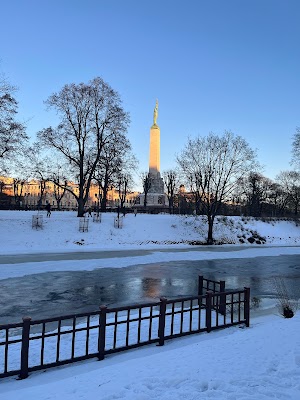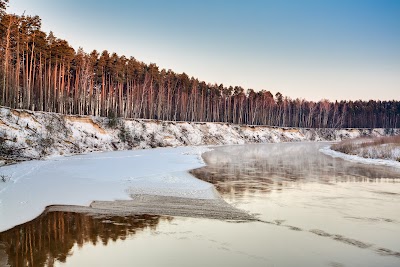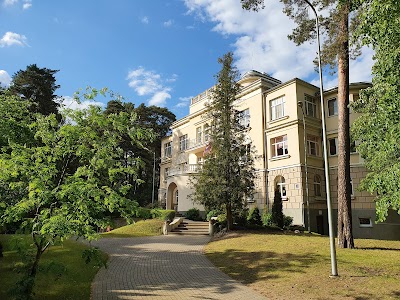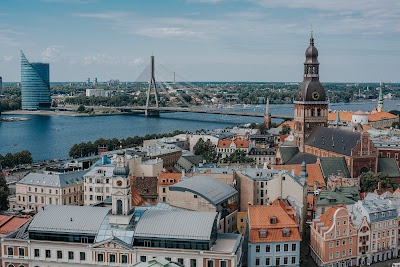Freedom Monument (Brīvības piemineklis)
Overview
The Freedom Monument, nestled in the charming city of Riga, Latvia, within the boundaries of Sala Municipality, stands as a profound symbol of Latvia's independence, heritage, and national pride. Erected to honor the soldiers who sacrificed their lives during the Latvian War of Independence (1918-1920), this majestic structure has become one of the most iconic landmarks in the country.
Unveiled on November 18, 1935, the monument was designed by the esteemed Latvian sculptor Kārlis Zāle. Its creation was largely funded by public donations, reflecting the collective spirit and determination of the Latvian people. Standing an impressive 42 meters (about 137 feet) tall, the central feature of the monument is a towering bronze female figure known as "Milda." Milda, the embodiment of freedom, holds aloft three golden stars, symbolizing the historical regions of Latvia: Vidzeme, Latgale, and Courland.
Beyond its striking physical presence, the Freedom Monument carries deep symbolic significance. It not only pays tribute to those who fought for Latvia's independence but also serves as a reminder of the nation’s enduring quest for freedom and self-determination. Throughout its history, the monument has been a gathering point during important national holidays and events, as well as a site for peaceful protests and public expressions of patriotism.
The monument's history is a testament to Latvia's resilience. During the Soviet occupation, there were numerous attempts to demolish it, yet it survived, becoming a poignant symbol of resistance and hope for the Latvian people. Following the country's regained independence in 1991, the statue has been meticulously restored and maintained, ensuring its legacy for future generations.
Visitors to the Freedom Monument will find it situated in the heart of Riga's bustling urban landscape, within Bastejkalns Park. This vibrant location serves as a popular starting point for exploring the city’s rich array of cultural and historical sites. The base of the monument features a series of intricate reliefs and sculptures that depict various scenes from Latvian history, including battles, cultural milestones, and allegorical representations of the nation’s values and aspirations.
An interesting aspect of the Freedom Monument is its eternal flame, which pays constant tribute to the sacrifices made by those who fought for Latvia's freedom. This flame serves as a focal point during many commemorative events and national celebrations, adding to the monument's significance.
For those eager to explore the context and story behind the Freedom Monument, guided tours are available. These tours provide a comprehensive overview of the monument's historical and cultural significance, offering insights into the stories of bravery and perseverance that define Latvia's path to independence. Additionally, the monument is conveniently located near the Museum of the Occupation of Latvia, which delves deeper into the country's tumultuous history through various exhibitions and interactive displays.
Visiting the Freedom Monument is not merely about observing a historical structure; it is an opportunity to experience the spirit of Latvia and its people. The lush green surroundings of Bastejkalns Park, with its serene canals and picturesque walkways, create a tranquil environment perfect for reflection and admiration. Whether you’re dressing the monument with flowers, participating in national events, or simply capturing its majestic silhouette against the sky, the Freedom Monument offers a profound and enriching experience.
In conclusion, the Freedom Monument stands as a sentinel of Latvia's storied past, a beacon of its enduring spirit, and a testament to the nation's hard-earned freedom. Its rich history and significant cultural symbolism make it a must-visit destination for anyone seeking to understand and appreciate the resilience and pride of the Latvian people. By visiting this landmark, foreign tourists can not only witness a vital piece of Latvia's heritage but also engage deeply with the narratives that have shaped this vibrant and resilient nation.






